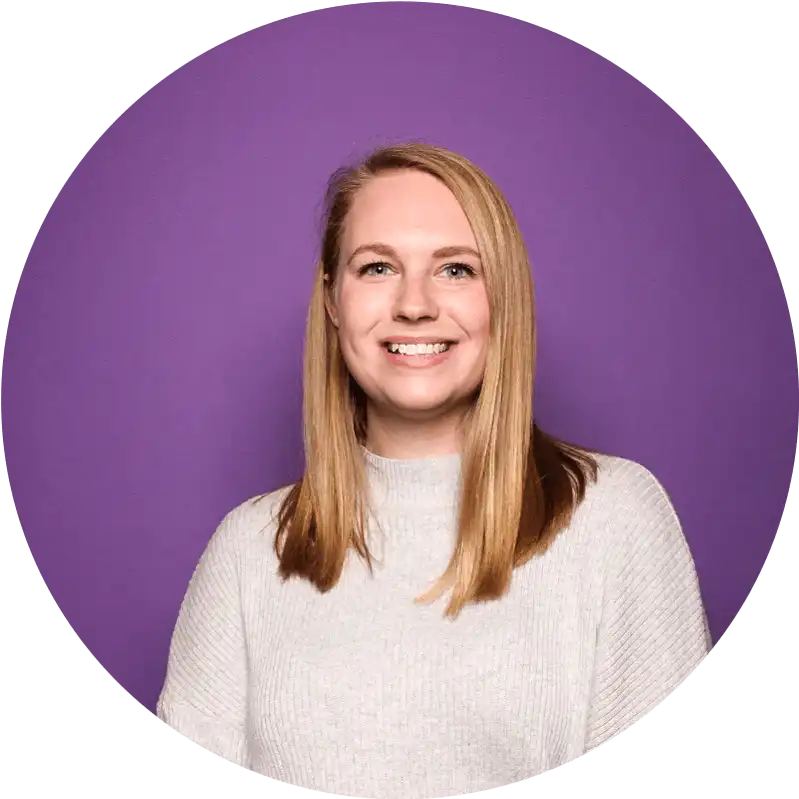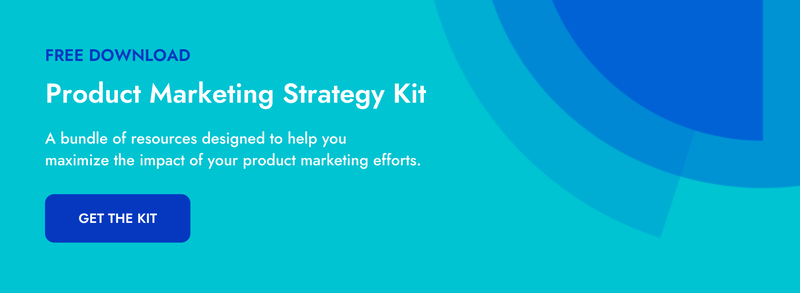 Crayon's Product Marketing Spotlight is an interview series where we chat with product marketers to get a glimpse into their careers and gain unique insight into product marketing strategy. In this edition of Product Marketing Spotlight Series, we shine the light on Alex Kevork, Vice President, Employer Integrated Segment & Product Marketing Strategy at Monster.
Crayon's Product Marketing Spotlight is an interview series where we chat with product marketers to get a glimpse into their careers and gain unique insight into product marketing strategy. In this edition of Product Marketing Spotlight Series, we shine the light on Alex Kevork, Vice President, Employer Integrated Segment & Product Marketing Strategy at Monster.
ED: What is your role?
AK: My role at Monster is twofold. My novel of a title reads “Vice President of Employer Integrated Segment & Product Marketing Strategy” what the!?… At Monster, we service a two-sided market. One side consists of the candidates who need someone on their side to help them find a job that’s the right fit for their needs, and the other side consists of employers who need to hire those great candidates. I manage two teams, one is the product marketing strategy around the overall products that we bring to market for both sides, and then the other side is focused on the more traditional B2B (called H2H these days) marketing built for the employers with content and resources that address their needs and challenges.
ED: What does the company do?
AK: I love this question. A lot of people are extremely familiar with the Monster brand. We’re lucky enough to have some of the best brand equity of any company around today. When we started 25 years ago, we sought out to fix a broken system around the job search and hiring. We were one of the first 500 domains ever registered. We disrupted an industry laden with primitive implements of job hunting, and hiring by making the process digital, inventing the online job board. Since then, that innovation drove many other players in the space to provide offerings. As a result, the industry has become over-reliant on technology and has lost much of the human touch that both candidates and employers seek, and rightly so. Monster has taken a turn back to its roots to yet again right a broken system, but for the same reasons. Our vision and mission are what I’m so excited about at this company. Every innovation we imagine, and every product we build for both candidates and employers revolve around the goal to make every workplace happier and more productive by transforming the way employers and candidates find the right fit.
ED: Tell me a little bit about your career path. What was your first job, and what else happened along the way to bring you to where you are now?
AK: That’s a long meandering story. In college, I studied entertainment marketing. I’m a musician, a theater kid, a dad-joker even before I became a dad, and I try to be creative in everything I do. But I really focused on the “musician” part for much of my early life. Near the end of my final semester, I got a gig working production for a music festival - stay with me here. I was basically carrying around plywood for two days until I met some folks who worked in the electrical division. I showed interest in how the whole place got powered up in the middle of a field, and the next thing I knew, I was part of their group, manually running miles of heavy electrical cable and learning how to operate mobile generators. As it turns out, the company that had been contracted for that work was headquartered in the town bordering my home town. When I returned home that summer, I joined the company full-time and was an electrician for major music festivals, live events, TV, and film all around the east coast. I even dabbled in some production management as a freelancer. During my downtimes at the company, mostly in the winters, my department was the one to do all maintenance and repairs on the building. From engine replacement, to carpentry, central AC installations, to welding, to plumbing, we did it all. So, I learned a TON about how to be handy. After a while, I went off on my own, doing light carpentry and other handyman type work around the Boston area. One family based out of Andover hired me for over a month’s worth of work.
I was ready for something new and wanted to utilize some of my marketing background and try my hand in the corporate world - crazy, I know. As it turns out, the person who owned the house I was doing work for was employed by a software company. We got to know each other and he told me about a contract opening on his marketing team. Entry level, low pay, but maybe worth a chat. I had the chat. I got the job, and so began my career in tech. From there I was hungry and it showed I suppose. After that contract gig, I actually got my first full-time corporate job on Monster.com! I gained experience in digital marketing, which was still kinda new in 2006, product marketing, demand gen - called lead gen at the time, field marketing, and so on. My goal was to grind away and gather as much experience as I could. Product marketing began to be something that stuck over time. Even when my role had other responsibilities attached to it, there was always a product marketing component. It was the perfect mix. I love product, I love marketing, this was just right for me.
ED: What skills do you think are necessary for a product marketer to grow in their career?
AK: One of the things that I think is core to being successful in product marketing is storytelling. I know that’s an overused term in business these days, but if you can be good at taking a piece of technology that has a bunch of features and functions and helping a potential buyer paint their own vision of what their world could be like with that tech, without necessarily even talking specifically about individual features, then you’re an excellent product marketer. It’s really hard because we fall so easily into feature/function language in tech, especially when speaking internally. I still don’t get it right all the time. It takes work and it’s different for every audience. And that’s just it, you need to know your audience as well as you know your tech, and that takes time, research, and creativity.
People skills are also extremely important. You’ll be working with sales, product, engineering, c-suite…basically everyone in the company outside of the lunch cashiers - but wait for one of my later points. People in different roles have different personalities and are often driven by different goals around different outcomes. It’s a very hard thing to balance, so get ready to be a mediator and a diplomat.
Lastly, get to know your product people and engineers and become part of their team. Be part of their sprints. Understand how to speak their language. If you don’t know this internal audience as well as your external audience, then you won’t be as effective.
ED: What sales enablement programs or resources have you found to be most impactful?
AK: I love Pragmatic Marketing and Sirius Decisions. Both great resources that obviously expand beyond sales enablement, but really help you to think in a sales enablement-minded approach. And when you are lucky enough to work with a sales enablement team like the one at Monster, it’s critical that you provide them with the right resources, collateral and expertise to help them do their jobs.
There are many tools out there, and at the risk of sounding like a shameless plug, tools like Crayon, Highspot, Big Tin Can, Uberflip and so many others are excellent tools that help you provide content to the sales team in an easily consumable way, and a way that is fresh and usable. It’s important to use the right tools that encourage use and provide you data on that usage. Sales folks are too busy to provide you feedback all the time, especially in the moment, but data and usage stats tell you when it’s time to address a piece of content or collateral and proactively go get that feedback.
ED: How do you get your sales team to actually use your sales enablement resources?
AK: Listen to them firstly. If you’re a good listener, at least you can take all of the requests and intel and think strategically about what it all means. Sometimes “I need a case study” can mean so many different things. A case study is a band-aid for SOMETHING, but it’s hard to know what. If you listen, you’ll learn that maybe it’s because the training you gave the sales team wasn’t quite what it needed to be and the customer isn’t quite getting it, so that customer is hoping a case study might help them understand it better. It could also mean that customer wants to see how people find ROI, and if that’s the scenario, there is a lot more one can provide outside of a simple case study. So it’s around listening and building a pattern of giving them tools that help close deals. The more you do that, the more credibility you gain. Having said all that, sometimes it’s just a matter of overcommunication. Repeatedly telling teams what they have access to, and where they can easily find it. “Easily” is the keyword here (such as storing resources in Highspot)). If they can’t find it quickly and easily, and even potentially offline, they won’t find it. Ease of use is not on the salesperson, it’s on product marketing and sales enablement. You’ll quickly learn that you could give them gold bullion, but if it’s not easy to find, people won’t use it.
ED: What is your advice for someone who is planning a product launch for the first time?
AK: Poke holes. Even the night before launch, press yourself to figure out what you’ve missed, because undoubtedly you’ve missed something, hopefully something small by that point. In every company, there are so many moving parts, and so many new and legacy processes that need to play well together, that it can be hard to catch everything. Be your own contrarian and don’t let yourself off the hook. Bring in as many people as you can to collaborate on your plan, but also be sure to lead. It takes a lot to manage opinions, and you’ll often have to make sacrifices, but if it’s your first one, you want to be sure you’ve got your bases covered. Is the sales team properly trained? Have you worked with pricing? Are you sure of the competitive landscape? It’s about collaboration and you need cross-functional stakeholder buy-in, but you should be prepared to be the owner of both the wins and the failures.
Also, use external resources. If it’s your first launch, even try to get some budget for a Sirius Decisions or Pragmatic Marketing. They are pros and can help you think about how to adapt their best practices into your specific circumstances.
Outside of a launch, there is a point buried here around innovation, and deciding what product to launch. A product marketing group is not only the voice of the product group out into the market, it also needs to be the voice of the market and help facilitate innovation. I think innovation facilitation is critical and often hard to own. Innovation can also often come from within. I used to work at a software company focused around idea management and innovation called Imaginatik. Its primary focus was around enabling anyone in an organization to contribute their minds to the company’s innovations. It’s important for product marketing to create a process for ideation and innovation from within the company, and it just may come from one of the lunch cashiers. I remember a line from an old punk rock song “sometimes the smallest softest voice carries the grand biggest solution.” Just be cautious at the same time. Getting ideas from everyone can be helpful, but it’s important to develop a process that shows accountability and visibility into those ideas and how they are managed. Without that transparency, people may feel shunned when their ideas aren’t in the next big product release, and ideation will quickly drop off.
ED: What skills have you learned from past roles that helped prepare you for your current role?
AK: A big help has been around presentation skills. Knowing how to present, and for me, prepare for a presentation is critical. I really depend on rehearsing for larger presentations, and even for the lighter-weight ones, I do run throughs ahead of time.
Another skill is working with visual tools. As much as it is ideal to be good at explaining to a designer what you’re looking for, it can be a smart move to get some basic design chops and training - learn the Adobe creative suite, so when those times arise that you don’t have a design team (hi startups), or don’t have the time to wait for one, you can get the job done.
Basic coding. Any entry level class on CSS, HTML, javascript, jQuery, etc. can be super helpful. From there, when you need to do some of your own coding, you at least know that they’re talking about when you read tutorials. You’ll also know how to speak the language of your product team.
Management. I’ll be the first to admit I still have a lot to learn about managing people, but that particular skill comes with practice and I’ve been lucky enough to have great people on my teams that report into me. The trick is, you will always be surprised by people, and no two personalities are the same, but it’s being adept at how to deal with those surprises that’s the key. Also, a good manager knows when he or she needs improvement and takes negative or constructive feedback with an open heart and mind. I’ve learned to get thick skin, where I didn’t at first, and I’ve learned to do my best to empower my team as opposed to managing them. As I said, I still have a lot of learning to do, but it’s that learning that drives me.
ED: What is something you wish you knew earlier in your career?
AK: A quote from an old manager of mine (and full disclosure I’ve used this in other interviews. See Katie Martell’s archives!). “You’ll be surprised at how much more you’ll get done the less you care about who gets credit.” It’s a hard one to fully live, egos fight a tough battle, but I will definitely say from experience that it’s true.
ED: What’s the best book you’ve read recently? Work or non-work related?
AK: Endurance by Alfred Lansing. Both work and non-work related.

Related Blog Posts
Popular Posts
-
 How to Create a Competitive Matrix (Step-by-Step Guide With Examples + Free Templates)
How to Create a Competitive Matrix (Step-by-Step Guide With Examples + Free Templates)
-
 The 8 Free Market Research Tools and Resources You Need to Know
The 8 Free Market Research Tools and Resources You Need to Know
-
 Sales Battlecards 101: How to Help Your Sellers Leave the Competition In the Dust
Sales Battlecards 101: How to Help Your Sellers Leave the Competition In the Dust
-
 6 Competitive Advantage Examples From the Real World
6 Competitive Advantage Examples From the Real World
-
 How to Measure Product Launch Success: 12 KPIs You Should Be Tracking
How to Measure Product Launch Success: 12 KPIs You Should Be Tracking





%20(1).png?width=500&name=CI%20Strategy-CI%20Audit%20(1)%20(1).png)